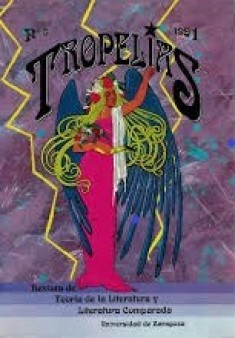Arts, artists, artifacts in José Donoso's "Spanish Trilogy"
DOI:
https://doi.org/10.26754/ojs_tropelias/tropelias.199123457Keywords:
José Donoso, Spanish Trilogy, literature and the arts, trompe l'oeilAbstract
From the beginning, José Donoso's fictions bring into play a series of mechanisms that tend to the abstraction of referents, the construction of spaces in trompe l'oeil and a world with all sort of objects come from an aesthetic transformation of the arts and their degraded products (artefacts). The insertion, by mention or allusion, of artistic or contrived representations in literary texts is not, of course, new. What singularizes José Donoso's fictions, and in particular the "Spanish Trilogy" (Tres novelitas burguesas [1973], La misteriosa desaparición de la marquesita de Loria [1980], El jardín de al lado [1981]), is the textual saturation of objects that participate in the illusion of reality or trompe l'oeil and, above all, the elaboration of narrative structures whose nuclear sustenance are paintings, sculptures, monuments, musical pieces or machines.
Downloads
Downloads
Published
How to Cite
Issue
Section
License
Los artículos enviados a la revista Tropelías deben ser originales e inéditos, no publicados previamente en cualquier soporte. Únicamente se aceptará material publicado total o parcialmente con anterioridad, o que esté en proceso de evaluación en otra revista, si se hace constar la causa de tal duplicación y se facilita la fuente donde ha aparecido dicho artículo.
Las imágenes que se incluyan en los artículos estarán libres de derechos de reproducción y, en caso contrario, los autores deberán presentar los permisos para su publicación y asumir los pagos derivados de ello.
Los artículos y reseñas publicados en la revista Tropelías pueden ser incluidos en repositorios temáticos o institucionales desde el momento de su publicación, sin modificación alguna e indicando claramente su procedencia.


